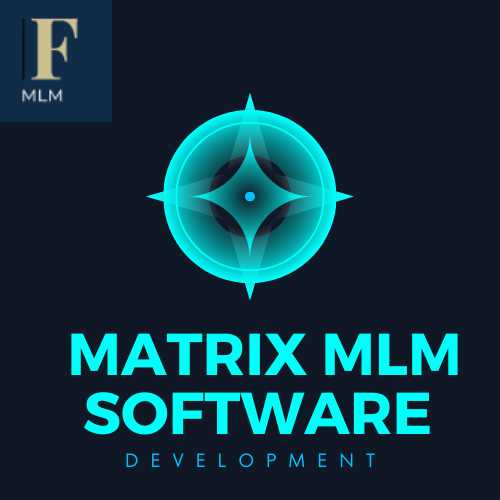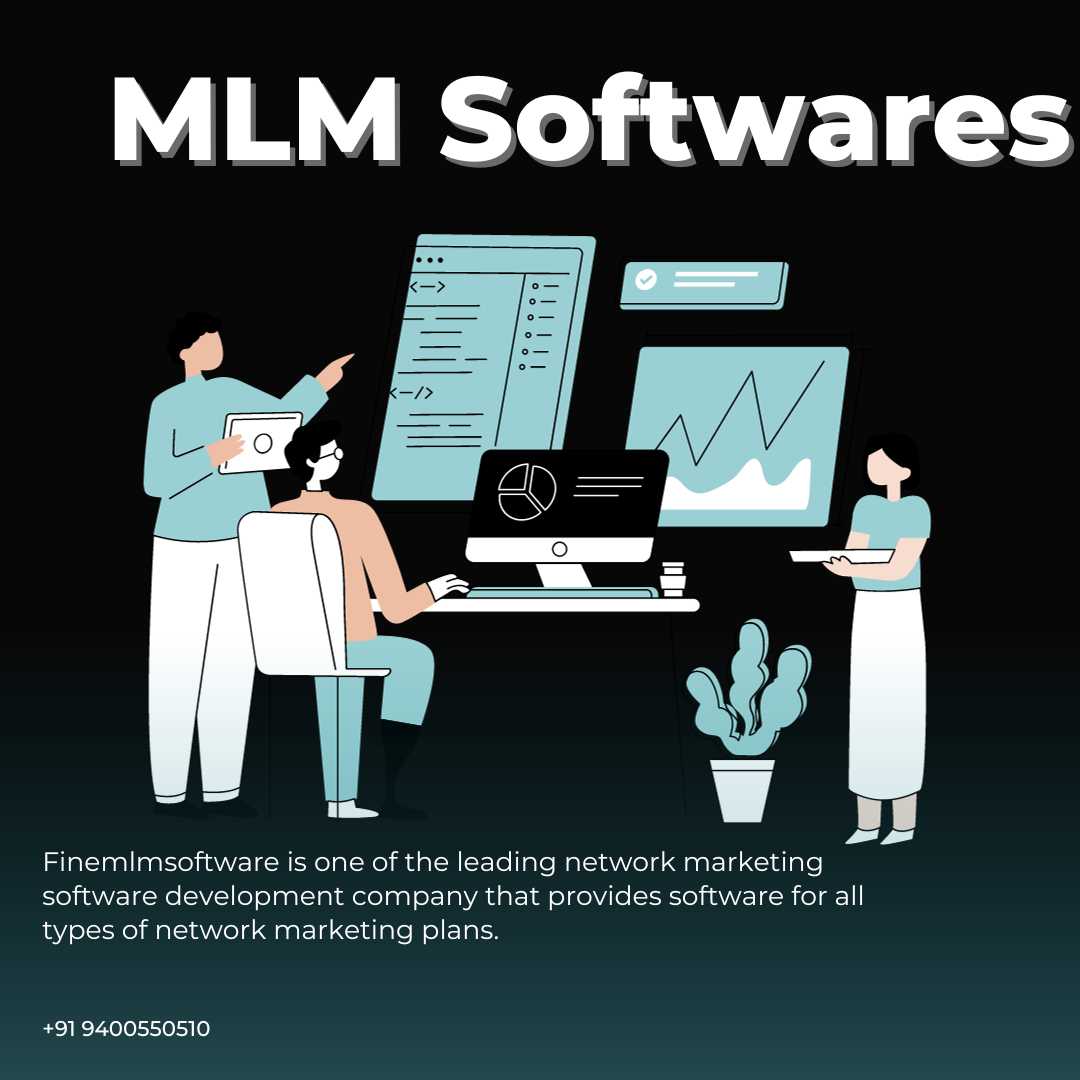Matrix MLM software refers to a type of MLM compensation plan where distributors are organized in a matrix structure, typically represented as a set number of width and depth levels. This structure can be 2x2, 3x3, or any other configuration. Each distributor can only have a limited number of frontline distributors, and any additional distributors are placed under their existing frontline distributors.
Here's an overview of the technology stack you might consider when developing Matrix MLM software:
Programming Language: You can use various programming languages for developing Matrix MLM software. Some popular choices include:
PHP: Often used for web-based applications due to its ease of use and compatibility with various web servers and databases.
Python: Suitable for both web and desktop applications, with a wide range of libraries and frameworks available.
Java: Suitable for enterprise-level applications, providing robustness and scalability.
Node.js: Ideal for real-time applications and microservices architecture.
Database Management System (DBMS): You'll need a database to store user information, network structure, transactions, etc. Commonly used databases include:
MySQL: Open-source relational database management system, widely used for web applications.
PostgreSQL: Another powerful open-source RDBMS known for its advanced features and stability.
MongoDB: A NoSQL database suitable for handling large volumes of data and flexible schema requirements.
Web Framework or CMS (Content Management System): Depending on the complexity of your software, you might use a web framework or CMS to streamline development:
Laravel (PHP): A popular PHP framework known for its elegant syntax and robust features, suitable for building complex web applications.
Django (Python): A high-level Python web framework that encourages rapid development and clean, pragmatic design.
Spring Boot (Java): A framework for building Java-based enterprise applications, providing a comprehensive infrastructure.
Express.js (Node.js): A minimalist web framework for Node.js, suitable for building lightweight and scalable applications.
Frontend Technologies: For the user interface, you can use a combination of HTML, CSS, and JavaScript along with frontend frameworks like:
React.js: A JavaScript library for building user interfaces, known for its component-based architecture and virtual DOM.
Vue.js: Another JavaScript framework for building interactive web interfaces, with a simple and adaptable design.
Angular: A comprehensive JavaScript framework for building client-side applications, maintained by Google.
Security: Implement security measures such as user authentication, authorization, data encryption, and protection against common web vulnerabilities (e.g., SQL injection, XSS).
Payment Integration: Integrate payment gateways to facilitate transactions within the MLM system. Ensure compliance with relevant financial regulations and standards.
Scalability and Performance: Design your software with scalability in mind to handle a growing user base and increasing data volumes. Optimize performance by implementing caching, load balancing, and other techniques.
Testing and Quality Assurance: Conduct thorough testing to ensure the reliability, functionality, and security of your Matrix MLM software. Automated testing tools and methodologies can help streamline this process.
When developing Matrix MLM software, it's essential to understand the specific requirements of your MLM business model and comply with legal regulations governing MLM operations in your region. Additionally, consider consulting with domain experts to ensure that your software meets industry standards and addresses the needs of distributors and administrators effectively.
https://finemlmsoftware.com/demo/matrix
#matrixmlmsoftware #matrixmlm


Multi-level marketing (MLM) has evolved over the years, adapting to changing business landscapes and technological advancements. One of the innovative approaches within the MLM realm is the Matrix MLM model, and the key to harnessing its full potential lies in the use of specialized Matrix MLM software. In this article, we explore the advantages, functionalities, and essential features that make Matrix MLM software a cornerstone for successful network marketing endeavors.
https://finemlmsoftware.com/demo/matrix
#matrixmlmsoftware #mlmsoftware

Binary MLM software is a specialized tool designed for businesses that operate on a binary compensation structure within the multi-level marketing (MLM) industry. In a binary MLM plan, each member can have only two direct recruits, creating a binary tree-like structure.
#binarymlmsoftware #unilevelmlmsoftware #investmentmlmsoftware #bestmlmsoftware #matrixmlmsoftware #bestmlmdevelopers #mlmdevelopemntcompany #multilevelmarketingsoftware #mlmsoftware
https://finemlmsoftware.com/demo/binary

#binarymlmsoftware #unilevelmlmsoftware #investmentmlmsoftware #bestmlmsoftware #matrixmlmsoftware #bestmlmdevelopers #mlmdevelopemntcompany #multilevelmarketingsoftware #mlmsoftware
"🚀 Boost Your MLM Business with Our Powerful MLM Software! 🌟
Looking to take your MLM venture to the next level? Here are some amazing benefits our MLM software brings to the table:
1️⃣ Efficiency: Say goodbye to manual calculations and admin headaches! Our MLM software automates tasks, making your operations smoother and more efficient.
2️⃣ Precision: Accurate commission calculations build trust among distributors, ensuring a transparent and harmonious business environment.
3️⃣ Real-Time Insights: Make informed decisions with real-time data and analytics. Stay ahead of trends and keep your business on the path to success.
4️⃣ Seamless Scaling: No network is too big! Our software grows with your team, guaranteeing smooth operations even as you expand.
5️⃣ Visualize Success: See your network structure like never before with interactive genealogy views. Optimize your recruitment and track downlines effortlessly.
https://finemlmsoftware.com

Join the ranks of innovative network marketing businesses that are already harnessing the power of technology. Our MLM software isn't just a tool; it's a game-changer. Visit https://finemlmsoftware.com to learn more or contact us at finemlmsoftware@gmail.com to schedule a demo.
#mlmsoftware #networkmarketing #businessinnovation #digitaltransformation

Fine MLM Software is one of the leading software companies in the world, specializing in Multilevel Marketing software. In addition to having a team of skilled professionals, we have a vision to provide cost-effective software globally. We have many clients across all major continents. Our software will be compatible with easy-to-integrate add-ons. In order to minimize manpower spent on the software and simplify and automate operations, we have a team of researchers and analysts. br brWith Fine MLM Software, you can automate your complete Network Marketing business in an efficient and effective way. Easy to manage, secured payments/payouts, connect your e-commerce store br brFine MLM Provides Softwares Binary MLM Software, Matrix MLM Software, Unilevel MLM Software, Strairstep MLM Software, Board MLM Software, Gift MLM Software, Investment MLM Software, Party Plan MLM Software, Generation MLM Software,Ecommerse based MLM Softwares

